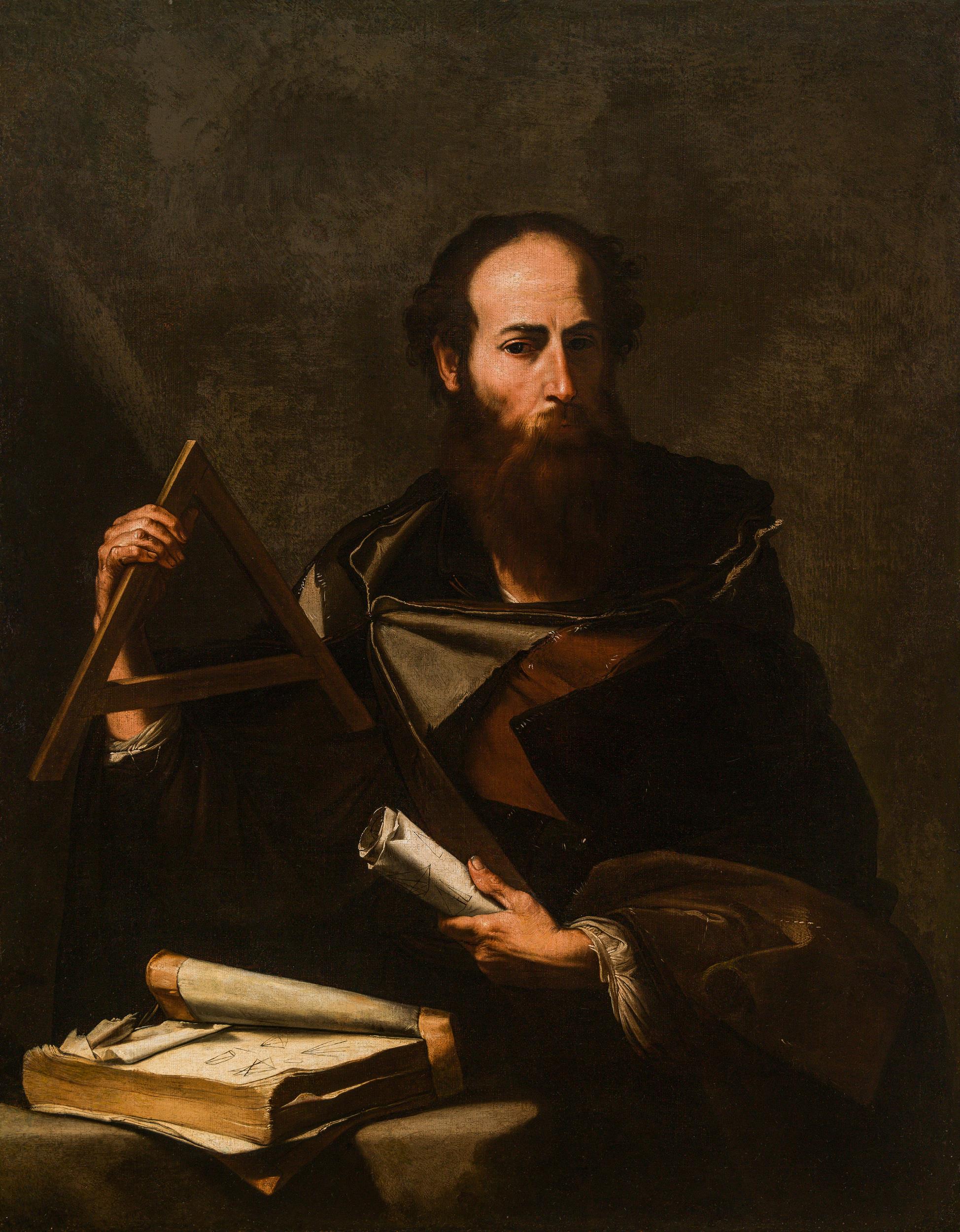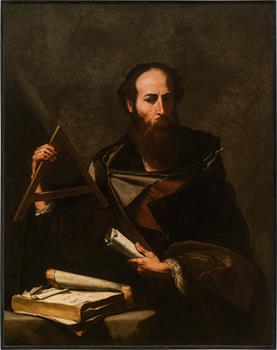0007
Studio of Jusepe de Ribera
„Euclid of Alexandria, Greek Mathematician (3rd century B.C.)“
oil on canvas
129 x 101 cm
Provenance
collection Arenaza, Spain;
private collection, Puerto Rico;
Christie's London, 10 April 1987 (as Francesco Fracanzano);
collection Erna Weidinger (1923–2021)
Estimate: € 25.000 - 50.000
Auction is closed.
Jusepe de Ribera is considered one of the most famous representatives of Neapolitan Baroque painting. His works are particularly impressive for their expressively modelled figures, staged with the skilful use of caravaggesque chiaroscuro painting. In addition to numerous style-defining compositions of ecclesiastical subjects, he is regarded today as one of the "inventors" of the modern philosopher's portrait. Thus, the present painting also joins Ribera's remarkable series of portraits of famous philosophers of antiquity, such as Diogenes, Archimedes and Plato. Mostly conceived in the 1630s, the compositions were repeated several times by the master himself or by artists from the workshop or the surrounding circle due to their success.
Each painting is carefully detailed and attributed to bring out the character and philosophy of the portrayed. The compositions testify to Ribera's great originality and inventiveness. Although he depicted wise men of antiquity, the artist refrained from any idealisation and created the powerful portraits as specific individuals based on real models.
Depicted in the three-quarters is the Greek mathematician Euclid of Alexandria (3rd century B.C.), who was also repeatedly conflated with the philosopher Euclid of Megara (born presumably around 450 B.C.) until early modern times. With his most famous writing, "Elements", he created one of the most important works on geometry and arithmetic, which was to be used as an academic textbook for 2000 years. Due to his groundbreaking insights, he is today referred to as the "father of geometry". The book opened in front of him and the scroll in his left hand also point to this: these show geometric sketches, as they are also depicted in the "Elements". Another version of the subject is in the Apelles Collection in Santiago, Chile (cf. Nicola Spinosa, Ribera. Naples 2006, p. 293ff., no. A83).


